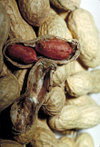M C Laxenaire, P M Mertes, Groupe d'Etudes des Reactions Anaphylactoides Peranesthesiques British Journal of Anaesthesia Vol 87 (October 2001) 549-558
Perioperative nurses must be prepared for emergencies, but with increasing pressure to be more efficient and do more with less, they may question whether and when it is a priority to be prepared for an intraoperative emergency. Researchers in a network of 38 French health care facilities examined the issue of one intraoperative emergency (ie, anaphylaxis) and identified triggering agents.
Methods. Researchers used a retrospective descriptive design to investigate anaphylactic reactions that occurred during anesthesia. The sample consisted of patients who had an anaphylactic reaction during anesthesia between Jan 1, 1997, and Dec 31, 1998. Four hundred seventy-seven patients enrolled in the study. Diagnosis was established using standardized criteria, including clinical history, cutaneous tests, and/or specific immunoglobulin-E (IgE) assay.
A questionnaire solicited demographic data, allergy history, anesthetic history, date of anaphylactic reaction, and medications administered before the reaction occurred. Reactions were graded from I to IV depending on severity (ie, I = cutaneous symptoms alone; II = measurable but not life-threatening symptoms; III = life-threatening reactions; IV = circulatory inefficacy, cardiac, and/or respiratory arrest). Information from allergy tests was recorded systematically, and cutaneous tests were performed. The presence of specific IgE against muscle relaxants was investigated using radioimmunoassay (RIA). In vitro testing for latex-specific IgE was performed using a radio-allergosorbent test. Researchers measured plasma levels of histamine with commercially available RIA kits.
To compare the incidence of anaphylaxis to available neuromuscular blocking agents, the quantity of agents sold in France in 1997 and 1998 was obtained from pharmaceutical companies. The number of vials used effectively in anesthesia was estimated based on a market survey. To determine the number of patients effectively exposed to each agent, a correction factor was applied based on the average number of vials used per anesthetic.
Results. Of the 477 participants, the majority were female (72.7%). Anaphylaxis resulted from exposure to 30 different substances, all of which are used routinely in France. Muscle relaxants were the most common cause (n = 336, 69.2%). The number of cases (n = 98) resulting from rocuronium was higher than its relative frequency of use in anesthesia. Natural rubber latex was the second leading cause (n = 59, 12.1%), followed by antibiotics (n = 39, 8.0%). Review of medical records identified evidence of an adverse reaction during previous anesthetic procedures in five participants.
Most adverse reactions were either grade II (22.9%) or grade III (62.6%). The majority (69.6%) included some cutaneous symptoms. Angioedema was seen in 11.7% of cases. Participants also experienced respiratory and cardiovascular responses, including cardiovascular collapse and bronchospasm. Severe complications included transient renal failure, coma or persistent vegetative state, hemiplegia, and neurological damage to the fetus of a pregnant patient.
Discussion. One strength of this study is the multicenter approach. This broader perspective provides a greater potential for generalizability of the findings. The ability to definitively determine what triggered an anaphylactic reaction is very important to avoid further reactions. The use of a standardized grading scale is another strength. The evidence that five people had previous reactions during anesthesia further supports the importance of preoperative assessments.
One limitation involves comparing the number of reactions associated with different agents. Ideally, a rate of reactions per dose administered would provide the best scientific information. This is very difficult to achieve in clinical practice. Researchers calculated a comparison based on an approximation of doses administered; although not as strong, this level of evidence is adequate for perioperative nurses responsible for patient care.
Nursing implications. All perioperative nurses should be prepared to manage anaphylaxis in the OR. Medications and supplies to treat a reaction should be kept on hand. Nurses should be familiar with the most likely triggering agents, and they should be readily available, particularly during administration of muscle relaxants, to help the anesthesia care provider manage an emergency.
Second to muscle relaxants, latex is the agent most likely to trigger an anaphylactic reaction. If anaphylaxis occurs and muscle relaxants have not been administered, surgical team members should change to nonlatex gloves before proceeding. This measure could prevent further exposure should the triggering agent be latex.
This study also provides direction for perioperative educators. Basic orientation should include information about triggering agents. A comprehensive understanding will heighten awareness during the administration of these agents. Competency testing should include questions about the most frequent triggering agents.
Managers should consider the implications of this study for the prevention of latex reactions. Screening patients for latex sensitivity is very important for providing safe care. Knowing the latex content of products and having latex-free supplies will increase efficiency when caring for these patients.
COPYRIGHT 2002 Association of Operating Room Nurses, Inc.
COPYRIGHT 2002 Gale Group



